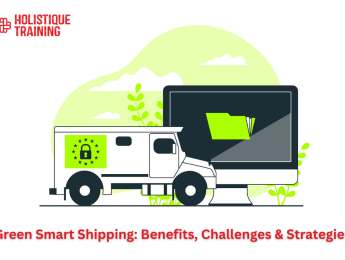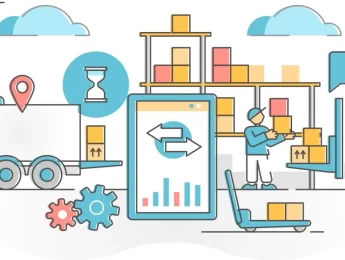-
Created at
2023-09-06
Updated at
2025-07-24
-
Introduction
Shopping has evolved dramatically in recent years, with consumers being presented with an array of purchasing methods. These methods are not just about paying for products; they encompass the entire shopping experience. From online shopping to in-store purchases, each method has its unique advantages and considerations. In this comprehensive guide, we'll delve into what purchasing methods entail, explore the factors influencing consumers' choices, examine seven popular purchasing methods, and discuss the key distinctions between online and in-store shopping. So, whether you're a seasoned shopper or just looking to enhance your shopping game, read on to master the art of making smart purchasing decisions.
What Does a Purchasing Method Mean?
Before we dive into the specifics, let's establish what we mean by a purchasing method. Simply put, it's the approach or strategy consumers employ to acquire the products they need or desire. These methods encompass not only the act of payment but also the entire shopping journey, including decision-making processes, channel choices, and post-purchase evaluation.
What Affects Consumers' Purchasing Methods?
Consumers' purchasing methods are influenced by a myriad of factors, reflecting individual preferences, external circumstances, and societal trends. Here are some key factors that shape how consumers choose their purchasing methods:
Budget and Financial Situation
A primary determinant of the purchasing method is one's financial standing. People with limited budgets may opt for cost-effective methods, while those with more disposable income may seek convenience and luxury.
Lifestyle and Habits
An individual's lifestyle, routines, and habits play a significant role. Busy professionals might prefer online shopping for its time-saving benefits, while retirees may enjoy the experience of traditional in-store shopping.
Technological Proficiency
The level of comfort and familiarity with technology affects the choice of purchasing methods. Tech-savvy individuals may lean towards online shopping, while others might prefer the familiarity of brick-and-mortar stores. Geographic Location
The availability of physical stores, proximity to shopping centres, and transportation options in one's area can influence purchasing methods. Rural residents may rely more on online shopping due to limited local retail options.
Product Type
The nature of the product being purchased matters. Some items, such as clothing and electronics, are well-suited for online shopping, while others, like groceries, may necessitate in-store visits.
Social and Cultural Factors
Cultural norms, social influences, and peer recommendations can guide consumers in choosing purchasing methods. For instance, a person's social circle may encourage or discourage online shopping.
Environmental Concerns
Increasing awareness of sustainability and environmental impact has led some consumers to opt for purchasing methods that align with their eco-friendly values, such as buying locally or choosing reusable packaging.
To help you better understand the diversity of consumer purchasing methods, let's explore seven popular methods consumers use while shopping, highlighting their strengths and considerations.
7 Popular Purchasing Methods Consumers Use While Shopping
In the ever-evolving world of commerce, consumers have a plethora of purchasing methods at their disposal. Each method offers a distinct shopping experience, catering to various preferences, lifestyles, and needs. Let's delve deeper into these popular purchasing methods, exploring their intricacies and the factors that make them unique.
1. Online Shopping
Online shopping, facilitated through websites or mobile apps, has become a staple in modern consumer culture. According to Oberlo, a staggering 2.14 billion people buy their products online. That being said, let’s delve deeper into this method’s advantages and considerations. Convenience and Time-saving
Perhaps the most prominent advantage of online shopping is its convenience. Shoppers can explore an extensive array of products, make purchases, and complete transactions without leaving the comfort of their homes. This method is especially appreciated by those with busy schedules or mobility challenges.
A Wide Range of Options and Price Comparisons
Online retailers offer a virtually limitless selection of products. Shoppers can easily compare prices across various sellers, enabling them to find the best deals and discounts available.
Access to Customer Reviews and Ratings
Online platforms provide a wealth of information through customer reviews and ratings. These insights empower shoppers to make informed decisions based on the experiences of others.
Limited Sensory Experience
One drawback of online shopping is the absence of the tactile and sensory experience offered by physical stores. Shoppers cannot physically touch, try on, or assess the quality of products, which can be crucial for items like clothing, footwear, or furniture.
Shipping Costs and Delivery Times
While the convenience of doorstep delivery is a significant perk, shipping costs and delivery times can vary. Some retailers offer free shipping, while others charge fees, impacting the overall cost of the purchase.
Security Concerns
Online shopping necessitates the sharing of personal and financial information, raising concerns about cybersecurity and the potential for data breaches. Shoppers must exercise caution and choose reputable websites with secure payment gateways.
2. In-Store Shopping
In-store shopping represents the traditional brick-and-mortar retail experience, which is, according to statistics, not gaining much growth in recent years. Specifically, in March 2022, e-commerce experienced a remarkable year-on-year growth rate of 27%, significantly outpacing the more modest 8% growth seen in the brick-and-mortar sector. Tangible Product Inspection and Try-On
In physical stores, shoppers can physically interact with products, try on clothing, assess the quality of goods, and examine them up close. This sensory experience is invaluable when making decisions about items like clothing, jewelry, or electronics.
Immediate Gratification
In-store shoppers can take their purchases home immediately, avoiding the waiting period associated with online deliveries. This instant gratification can be especially appealing for those who prefer immediate access to their new acquisitions.
In-person assistance and Customer Service
Retail staff is readily available to provide personalized assistance, answer questions, and offer recommendations. This human touch enhances the shopping experience and helps customers make well-informed choices.
Time-Consuming
In-store shopping typically requires more time compared to online shopping. Traveling to physical locations, navigating through stores, and waiting in line can be time-consuming, especially during peak shopping seasons.
Limited Selection in Smaller Stores
Smaller retail establishments may have a more limited selection of products compared to their online counterparts or larger department stores. This limitation can influence the variety of choices available to shoppers.
Potential for Impulse Buying
Being physically present in a store exposes consumers to products they might not have considered otherwise. This can lead to impulse purchases, which may or may not align with a shopper's intended budget.
3. Mobile Shopping
Mobile shopping involves making purchases through mobile apps on smartphones.
Portability for On-the-Go Shopping
Mobile shopping allows consumers to browse and buy products from virtually anywhere, as long as they have their smartphone with them. This level of portability is particularly convenient for those with active lifestyles or those who are frequently on the move.
Easy Access to Mobile-Exclusive Deals
Many retailers offer exclusive discounts and promotions to mobile app users. This incentive encourages shoppers to embrace mobile shopping for the added savings.
Fast and Convenient Payment Options
Mobile apps often integrate seamless and secure payment methods, including mobile wallets and one-click purchasing. This streamlines the checkout process and reduces friction in making purchases.
Smaller Screen Size
Shopping on a smartphone screen, while convenient, may present challenges related to screen size. Some users may find it less enjoyable to browse and make detailed product comparisons on smaller screens.
Potential Distractions from Other Apps
Smartphones are versatile devices that can easily become distractions. While shopping, users may be tempted to switch to other apps, such as social media or games, which can disrupt the shopping experience.
Security Concerns
Just like online shopping, mobile shopping requires users to share personal and financial information. Ensuring the security of this data is paramount, as smartphones can be susceptible to hacking and malware attacks.
4. Subscription Box
Subscription box services involve recurring deliveries of curated products based on a chosen theme or category.
Discovery of New Products
Subscription boxes offer a unique and exciting way to discover new products. Each shipment is carefully curated, introducing subscribers to items they might not have encountered otherwise.
Convenient and Surprise Factor
Subscribers receive packages regularly, creating an element of surprise and anticipation. This can be particularly enjoyable for those who appreciate the joy of unboxing.
Ideal for Gift-Giving and Self-Indulgence
Subscription boxes make excellent gifts, as they provide ongoing surprises tailored to the recipient's interests. They also allow individuals to pamper themselves with carefully selected products.
Limited Customisation Options
While some subscription boxes offer limited customization based on preferences, the element of surprise is a core feature. Subscribers may receive items they don't necessarily need or want.
Monthly Subscription Costs
Subscription box services typically involve monthly fees, which can add up over time. Subscribers should consider the cost and whether the value received aligns with their budget.
Possibility of Receiving Unwanted Items
Since the contents of subscription boxes are curated by the service provider, subscribers may receive items that don't resonate with their preferences. This can occasionally result in disappointment.
5. Local Shopping
Local shopping emphasizes supporting local businesses, artisans, and establishments within one's community.
Community Engagement and Support
Local shopping fosters a sense of community engagement by supporting neighborhood businesses and contributing to the local economy. It's an opportunity to invest in the well-being of the community.
Unique and Artisanal Products
Local shops often offer products that are unique, handcrafted, or locally sourced. This adds a distinctive and personal touch to the items available for purchase.
Reduced Carbon Footprint
Choosing local options can be environmentally friendly by reducing the carbon footprint associated with shipping and transportation.
Limited Product Range
Local shops may have a more limited range of products compared to larger retail chains or online marketplaces. This can affect the variety and availability of items shoppers can access.
Potentially Higher Prices
Local and artisanal products are often priced higher due to the craftsmanship and quality involved. Shoppers should be prepared for potentially higher price tags when supporting local businesses.
Inconvenient If Local Options Are Scarce
In areas with limited local shopping opportunities, it may be challenging to exclusively rely on local sources for all purchases. Consumers in such regions may need to balance their desire to support local businesses with practical considerations.
6. Auction Bidding
Auction bidding involves participating in online auctions to acquire products or services.
Potential for Substantial Savings
Auctions provide a platform where shoppers can potentially acquire products at prices significantly lower than retail. This competitive aspect can be enticing for those looking for deals.
The thrill of Winning Auctions
Bidding in auctions can be an exhilarating experience. The thrill of winning an auction and securing a desired item at a favorable price can be quite satisfying.
Opportunity to Find Rare or Collectible Items
Auctions often feature unique, rare, or collectible items that may not be readily available through traditional retail channels.
Competitive and Time-Consuming
Auctions are competitive by nature, with participants vying to outbid one another. This can be time-consuming and may not be suitable for those seeking a quick and straightforward shopping experience.
Risk of Overbidding
The competitive nature of auctions can lead to overbidding, where participants become emotionally invested and exceed their intended budget.
Limited Control Over the Final Price
Winning an auction is contingent on being the highest bidder, which means that participants may end up paying more than they initially planned if there is strong competition.
7. Social Commerce
Social commerce involves purchasing products directly through social media platforms.
Easy Discovery of Trending Items
Social media platforms showcase trending products and recommendations based on user interests and behaviors. This makes it easy for consumers to discover new and popular items.
Personalized Recommendations
Algorithms on social media platforms analyze user data to provide personalized product recommendations, increasing the likelihood of finding items that align with individual preferences.
Social Engagement and Community
Social commerce combines shopping with social interaction. Users can share their purchases, recommendations, and reviews with friends and followers, creating a sense of community and trust.
Trustworthiness of Sellers
The credibility and trustworthiness of sellers on social media platforms can vary. Consumers should exercise caution when making purchases and ensure they are buying from reputable sources.
Limited Product Information and Reviews
Unlike traditional e-commerce websites, social media platforms may provide limited product information and reviews, making it important for consumers to research products independently.
Privacy and Data Security Concerns
Sharing personal information and payment details on social media platforms can raise privacy and data security concerns. Users should prioritize secure transactions and safeguard their information.
Each of these seven popular purchasing methods offers a unique set of advantages and considerations. The choice between them ultimately depends on individual preferences, needs, and the specific circumstances surrounding each shopping endeavor. Understanding the nuances of these methods empowers consumers to make well-informed decisions, ensuring that their shopping experiences are tailored to their desires and expectations.
Online Purchasing Methods vs. In-store Purchasing Methods: Do They Differ?
As we delve deeper into exploring purchasing methods, it's important to distinguish between online and in-store methods, as they represent two distinct shopping paradigms. While both aim to fulfill consumers' needs, they do so in markedly different ways. Let's examine the key differences:
Online Purchasing Methods
Online shopping has become increasingly popular due to its convenience and accessibility. Here's how it differs from in-store purchasing methods:
Convenience
Perhaps the most significant advantage of online shopping is convenience. Consumers can browse products, compare prices, and make purchases from the comfort of their homes or on the go, 24/7.
Wide Selection
Online retailers often offer a vast array of products, spanning various categories and price points. Shoppers can easily find niche or hard-to-find items that may not be available locally.
Price Comparisons
Online platforms make it easy to compare prices across different sellers, enabling consumers to find the best deals and discounts.
Customer Reviews
Detailed product reviews and ratings from other buyers provide valuable insights, helping shoppers make informed decisions.
Personalization
Online stores often use algorithms to recommend products based on a shopper's past purchases and browsing history, enhancing the overall shopping experience.
Delivery Options
Various shipping and delivery choices, including same-day and next-day delivery, make online shopping adaptable to different needs.
However, online purchasing methods also come with some considerations:
Limited Sensory Experience
Online shoppers miss out on the tactile experience of physically inspecting products before purchase. This can be a drawback, especially for items like clothing or furniture.
Shipping Costs
Depending on the seller and location, shipping costs can add to the overall price of a product.
Security Concerns
Cybersecurity is a significant concern for online shoppers. Protecting personal and financial information from cyber threats is crucial.
In-store Purchasing Methods
In-store shopping, on the other hand, offers a more traditional and hands-on approach to purchasing. Here's how it differs from online methods:
Tangible Inspection
Shoppers can physically touch, try on, and inspect products before making a purchase decision. This sensory experience is especially valuable for clothing, footwear, and electronics.
Immediate Gratification
In-store shoppers can take their purchases home immediately, avoiding the wait associated with online deliveries.
In-person Assistance
Retail staff can provide personalized assistance, answer questions, and offer recommendations, enhancing the shopping experience.
Limited Selection
Physical stores may have a limited selection compared to online retailers, especially in smaller or specialized shops.
Potential for Impulse Buying
In-store shopping exposes consumers to products they might not have considered online, potentially leading to impulse purchases.
Social Interaction
Shopping in physical stores allows for social interaction and the opportunity to shop with friends or family, turning it into a social event.
While in-store shopping offers a unique and immersive experience, it does come with some drawbacks, such as the potential for longer shopping times and the need to travel to physical locations.
Conclusion
In the world of shopping, consumers have a multitude of purchasing methods at their disposal. These methods reflect individual preferences, lifestyle choices, and external factors. Whether you're an avid online shopper, a fan of in-store experiences, or someone who loves discovering new products through subscription boxes, understanding the various purchasing methods can help you make informed choices and optimize your shopping journey.
In this guide, we explored what purchasing methods mean and delved into the factors that influence consumers' choices. We also examined seven popular purchasing methods, each with its own set of advantages and considerations. Finally, we compared online and in-store purchasing methods, highlighting their differences and unique qualities.
As you embark on your next shopping adventure, keep in mind that the best purchasing method for any given situation depends on your specific needs and preferences. Whether you choose the convenience of online shopping, the sensory experience of in-store visits, or a blend of both, mastering the art of shopping means making informed decisions that align with your goals and values. Happy shopping!
Finally, if you're eager to take your understanding of effective purchasing processes to the next level and gain valuable insights into supplier selection, make sure to check out our course, ‘Selecting the Right Supplier & Creating Effective Purchasing Processes.’ This course equips you with the skills and knowledge needed to optimize your procurement strategies and make well-informed decisions in a competitive marketplace. Enhance your expertise and elevate your purchasing prowess by enrolling today!
Frequently Asked Questions (FAQ)
Understanding purchasing methods is crucial because it directly impacts your overall shopping experience. It empowers you to make informed decisions, ensuring that the way you shop aligns with your specific needs, preferences, and values. By grasping the intricacies of different methods, you can optimise your purchases in terms of value, convenience, and satisfaction.
When you comprehend the advantages and considerations of each method, you're better equipped to navigate the ever-expanding landscape of shopping choices. This knowledge enables you to make choices that not only cater to your immediate requirements but also contribute to a more enjoyable and efficient shopping journey.
Enhancing online shopping security is of paramount importance in the digital age. Here are some key steps to bolster your online security:
Use Reputable Websites: Stick to well-known and trusted online retailers. Verify the website's authenticity, look for customer reviews, and read their policies.
Keep Software Updated: Regularly update your operating system, web browser, and antivirus software. These updates often include security patches that protect against vulnerabilities.
Strong and Unique Passwords: Create strong, unique passwords for your online accounts. Use a combination of letters, numbers, and symbols. Avoid using easily guessable information like birthdays.
Two-Factor Authentication (2FA): Enable 2FA whenever possible. This adds an extra layer of security by requiring a second verification step, such as a text message or app notification.
Supporting local businesses carries several advantages:
Community Engagement and Support: By patronising local shops, you contribute to the growth and well-being of your community. This support helps sustain local jobs and the local economy.
Unique and Artisanal Products: Local businesses often offer products that are unique, handcrafted, or locally sourced. This adds a personal touch to your purchases and allows you to discover one-of-a-kind items.
Reduced Carbon Footprint: Choosing local options can be more environmentally friendly. It reduces the carbon footprint associated with long-distance shipping, contributing to sustainability efforts.
Avoiding overbidding in online auctions requires discipline and a clear strategy:
Set a Budget: Before participating in an auction, establish a clear budget. Determine the maximum amount you're willing to spend on the item and stick to it.
Bid Strategically: Avoid getting emotionally caught up in the excitement of the auction. Bid strategically, placing bids strategically and incrementally, rather than impulsively raising your bid.
Stay Informed: Research the item you're bidding on to understand its market value. This will help you make informed decisions and avoid paying more than the item is worth.
Use Auction Tools: Many online auction platforms offer tools that allow you to set automatic bids. These tools can help you stay competitive without constantly monitoring the auction.
Budget: Determine how much you're willing to allocate to a subscription box service. Consider whether the monthly cost fits comfortably within your budget.
Value Proposition: Evaluate the value you expect to receive from the subscription. Assess whether the curated items, surprises, and thematic content match your interests and preferences.
Past Offerings and Reviews: Research the specific subscription box service by looking at past box contents and reading reviews from subscribers. This can give you insights into the quality and variety of items typically included.
Cancellation Policy: Understand the subscription's cancellation policy, including any associated fees or terms. Ensure you have the flexibility to pause or cancel your subscription if needed.
Customisation: Some subscription boxes offer limited customisation options. Consider whether the level of personalisation aligns with your preferences.

























